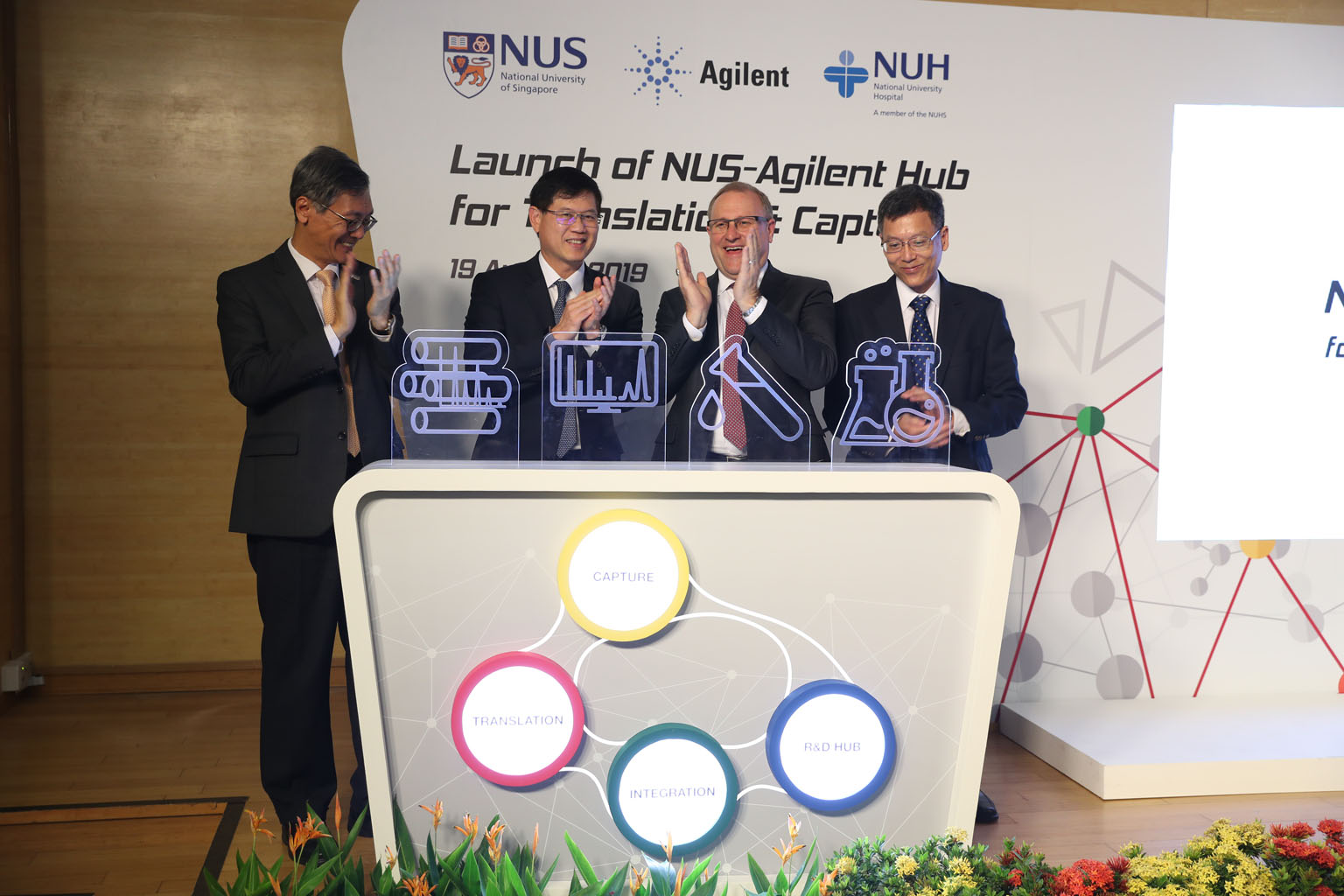New $38m hub to spearhead diagnostics research
One such study involves building blood sample database to predict possible diseases that may afflict a person
Sign up now: Get ST's newsletters delivered to your inbox

(From far left) Professor Tan Eng Chye, president of National University of Singapore; Associate Professor Benjamin Ong, the Ministry of Health's director of medical services; Mr Mike McMullen, president and chief executive of Agilent Technologies; and Associate Professor Eugene Liu, chief executive of National University Hospital, at the opening ceremony of the NUS-Agilent Hub for Translation and Capture yesterday.
ST PHOTO: TIMOTHY DAVID
Cheryl Teh
Follow topic:
Researchers at the National University of Singapore (NUS) are working to find a way to predict heart attacks long before any symptoms manifest.
This research, among others, will take place in a special $38 million facility at NUS, jointly established by the university, life sciences and diagnostics company Agilent, and the National University Hospital (NUH).
Scientists, clinicians and their industry partners will investigate how clinical diagnostics can be improved - to the extent where a simple blood sample might be enough to forecast possible diseases.
This will first involve forming a database of blood samples from the Singaporean population to test if there are irregularities in the blood sample, based on hundreds of testing markers.
The researchers will collect another blood sample from the patient some months later to measure the changes in lipid molecules, said Dr Choi Hyung Won, co-principal investigator for the project and associate professor at the Cardiovascular Research Institute, at the NUS Yong Loo Lin School of Medicine.
"These changes can sometimes be indicative of huge shifts in a patient's health that might cause diabetes or heart diseases in a matter of years," Dr Choi said.
The data will then be used to build a prediction model, which could one day be used in local hospitals.
Dr Choi said: "We will analyse the data, in terms of whether parts of the molecules can predict disease, and when the disease will occur.
"If you collect 100,000 samples, it would be around 4 per cent of the local population. Singapore's population size would then make it a good test bed to see if our model works here," he said.
Dr Loh Tze Ping, co-principal investigator on the project at the NUH department of laboratory medicine, told The Straits Times that the discoveries made at the NUS-Agilent Hub for Translation and Capture (NUS-Agilent Hub) might one day be used routinely.
Dr Loh said: "By offering this in-depth testing service, doctors might be able to diagnose patients better. Thinking in medicine is somewhat reactive - where we react to patients' conditions. We want to move more upstream, to detect issues in patients before heart conditions manifest or in the early stages of the disease.
"This predictive model may one day be able to tell us where patients end up in future - and we are taking baby steps to have the model detect irregularities in the blood as early as possible."
The NUS-Agilent Hub was launched yesterday by Associate Professor Benjamin Ong, the Ministry of Health's director of medical services. He said: "The NUS-Agilent Hub is the result of a long-standing collaboration between NUS and Agilent researchers, with funding support from the Government.
"NUS researchers have been studying small molecules that are of clinical significance using Agilent's technology. This technology will allow for a non-invasive approach to test the state of health and disease in patients, and potentially allow doctors to choose more appropriate forms of treatment," he added.

